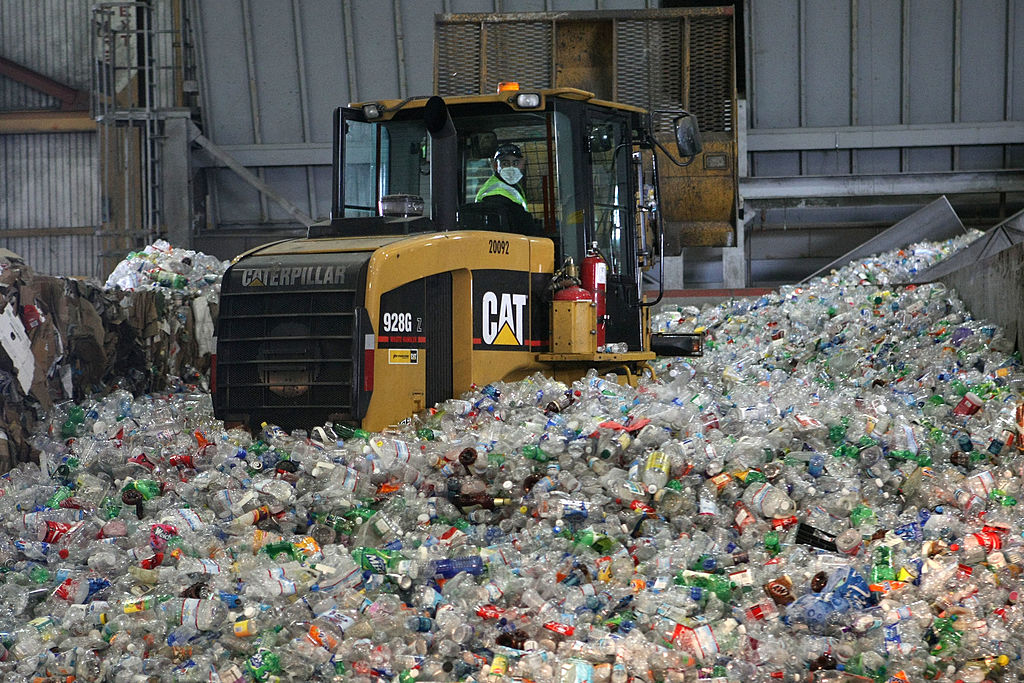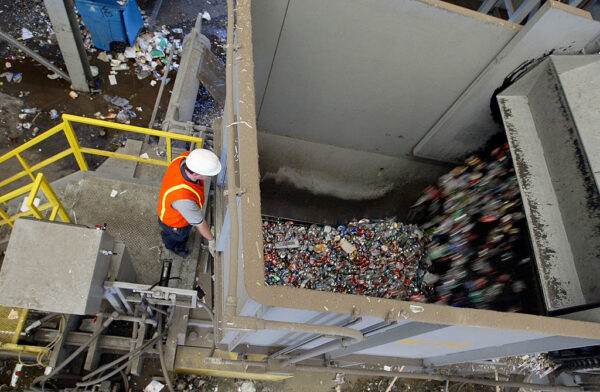


California is revealing new information to the public that shows the eco-friendly state is dumping tons of toxic waste in other states every year.
Since 2010, California has dumped nearly half of its hazardous waste out of state—mostly in Utah, Arizona, and Nevada—according to the state’s latest figures (pdf). Thirteen more states also have received California’s toxic waste but in much lower quantities.
In the past 13 years, the state has dumped 3.7 million tons of hazardous waste in Utah, more than 2.9 million tons in Arizona, and nearly 2.3 million tons in Nevada.
An investigation published by CalMatters in January found one of the biggest out-of-state toxic waste dumpers was the state’s own Department of Toxic Substances Control.
The reason is neighboring states don’t have as many environmental regulations for dumping hazardous waste, and it costs less.
Two of the state’s most favored locations to dump the waste are by Native American reservations in western Arizona, the La Paz County Landfill and the South Yuma Landfill, the latter of which has a history of violating state regulations.
Rep. Paul Gosar (R-Arizona), who represents the region in Congress, said California should keep its waste.
“It’s bad enough that liberal Californians are moving in droves to Arizona after torching their own state and turning it into a cesspool of crime and homeless junkies,” Gosar told The Epoch Times in a statement. “We certainly don’t need or want their toxic waste.”
“I will ask the Attorney General to review this and see what laws are being broken, if any,” he added. “Don’t California my Arizona, keep your waste in Los Angeles, where it belongs.”
Many experts say a law that passed two years ago, Senate Bill 158, increased the cost to dump hazardous waste in California—one reason why the state uses landfills elsewhere. It increased taxes and fees at landfills and imposed charges on organizations that use, generate, or store hazardous waste.
It also established a five-member Board of Environmental Safety at the state’s Department of Toxic Substances Control to regulate the waste and clean up toxic sites. The department also issues yearly reports detailing how much toxic waste is generated and where it goes.
“When overseeing cleanup projects, the Department of Toxic Substances Control manages hazardous waste in an appropriate, responsible, and safe manner while maximizing available resources. This includes the use of out-of-state facilities,” the department’s spokeswoman Alysa Pakkidis told The Epoch Times.
California has exported its waste for many years. The state used to ship its recyclables to China before the country banned the practice in 2018.
“This is not something new,” Jane Williams, executive director for California Community Against Toxics, told The Epoch Times. “This has been going on for as long as California has become industrialized.”
One game-changer for the state was the elimination of incinerators that were used in the past to process hazardous waste.
In the 1970s, the state had 12 operating hazardous waste incinerators and 12 proposals to build new ones. But in 1990, those projects were killed by environmental activists and most of the existing facilities were closed to provide “environmental justice” to the communities affected by them, Williams said.
In 2021, environmental activists at Earthjustice called for the closure of the state’s last two municipal waste incinerators in Long Beach and Stanislaus County, calling them “vestiges of environmental racism.”
Both facilities are over 30 years old and require significant investment to continue operating. They are also located in so-called “environmental justice communities,” according to the state, meaning the populations are predominantly persons of color or substantially below the poverty line.
“Ultimately, these facilities are obstacles to a full investment in a zero-waste future for California residents and should not be subsidized or supported any longer,” Earthjustice said in a statement.
According to the U.S. Environmental Protection Agency, solid waste incinerators emit hazardous air pollutants, harmful emissions, and toxic ash, posing health concerns for nearby residents and the environment, according to a State Legislature analysis.
Long Beach’s incinerator is funded through 2024 and the contract for the Stanislaus facility ends in 2027.
Only two fully-permitted hazardous waste landfills remain in the state—the Kettleman Hills Facility in Kings County and the Buttonwillow landfill in Kern County.
California has some of the most extensive recycling mandates in the world, recycling wood, cardboard, glass, aluminum, and most recently, food and biomaterial. This generates a lot of recycled waste. But the hardest to recycle is hazardous waste and plastic, so that material gets shipped to other states, Williams said.
“It’s partly due to economics because it can be cheaper,” she added.
Williams attributes the problem to the growth in plastics and other chemicals that can’t be recycled or reused. California regulates its landfills, and that makes it more expensive to dump waste in the state, she added.
“I don’t see it changing anytime soon,” Williams said. “We continue as a society to manufacture chemicals and consumer products that aren’t recyclable.”
California’s exported toxic trash has stirred some opposition among communities in neighboring states.
In Arizona, the La Paz County Landfill is located about 10 miles from the Colorado River Indian Tribes Reservation.
David Harper, who was director of the tribe until recently, spoke with National Public Radio (NPR) in February about his concerns. California recently hauled more than 160,000 tons of contaminated soil to the facility from an old industrial site contaminated with things like lead and the insecticide DDT.
“Why didn’t California keep it themselves?” Harper asked NPR. “What did we do to create this issue to where you have to bring your toxins to our traditional homeland? Why is that fair?”
Further north in Salt Lake City, Utah, Lynn de Freitas, the executive director of Friends of Great Salt Lake, is speaking out about Promontory Point Resources, a landfill located on the shores of the Great Salt Lake.
The landfill applied for a state permit in 2017 to accept hazardous waste from out-of-state but faces opposition from environmental groups and the Utah Department of Environmental Quality, which recommended denying the permit (pdf).
De Frietas and others oppose allowing the toxic trash to be dumped at Promontory Point and expect the landfill to appeal the state’s decision to deny its permit.
“I have little doubt that Promontory is going to challenge the division’s decision not to grant the [permit],” she told The Epoch Times. “If wishes were fishes, California would address its own hazardous waste issues. They would do whatever they need to do to mediate the hazardous waste footprint instead of exporting to other states who have to figure out what they are going to do with it.”


